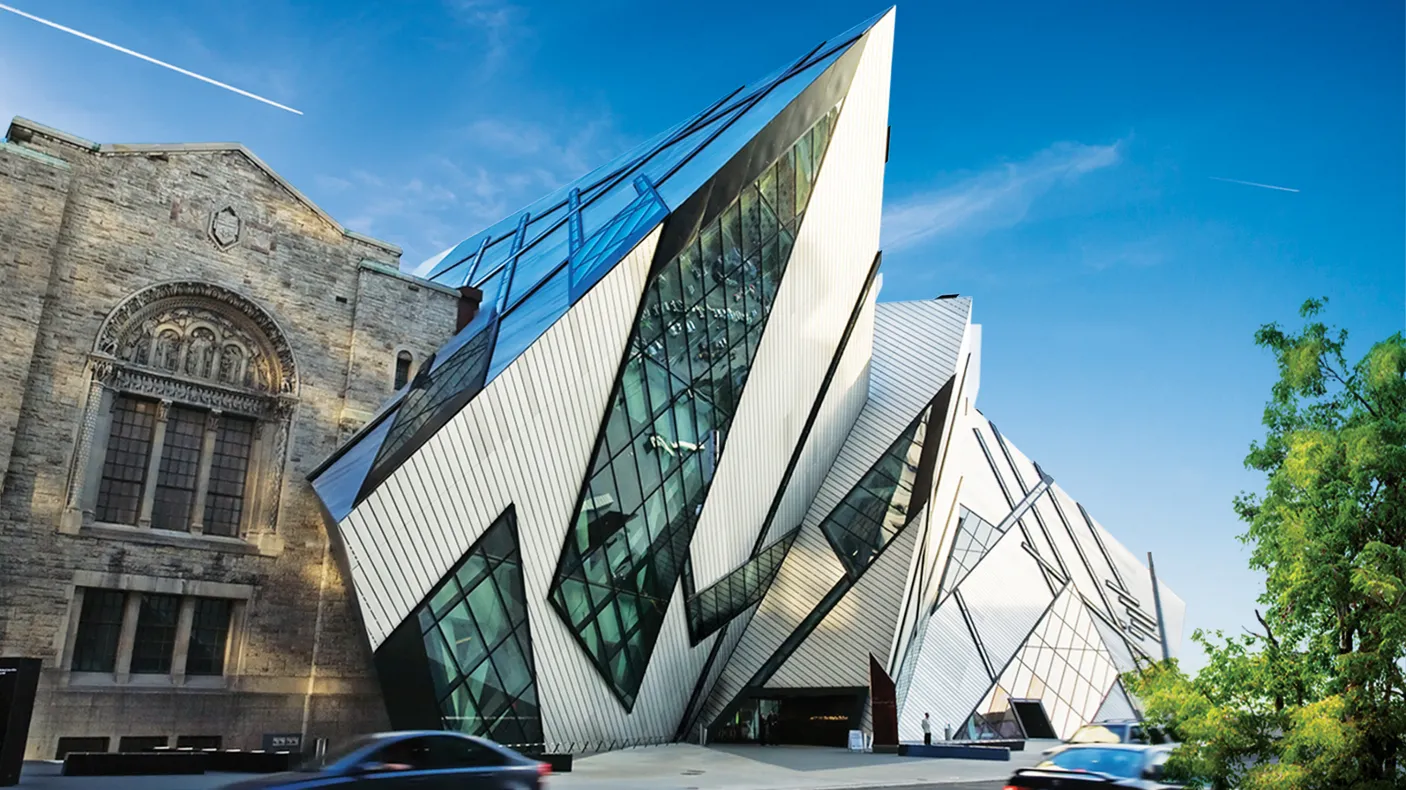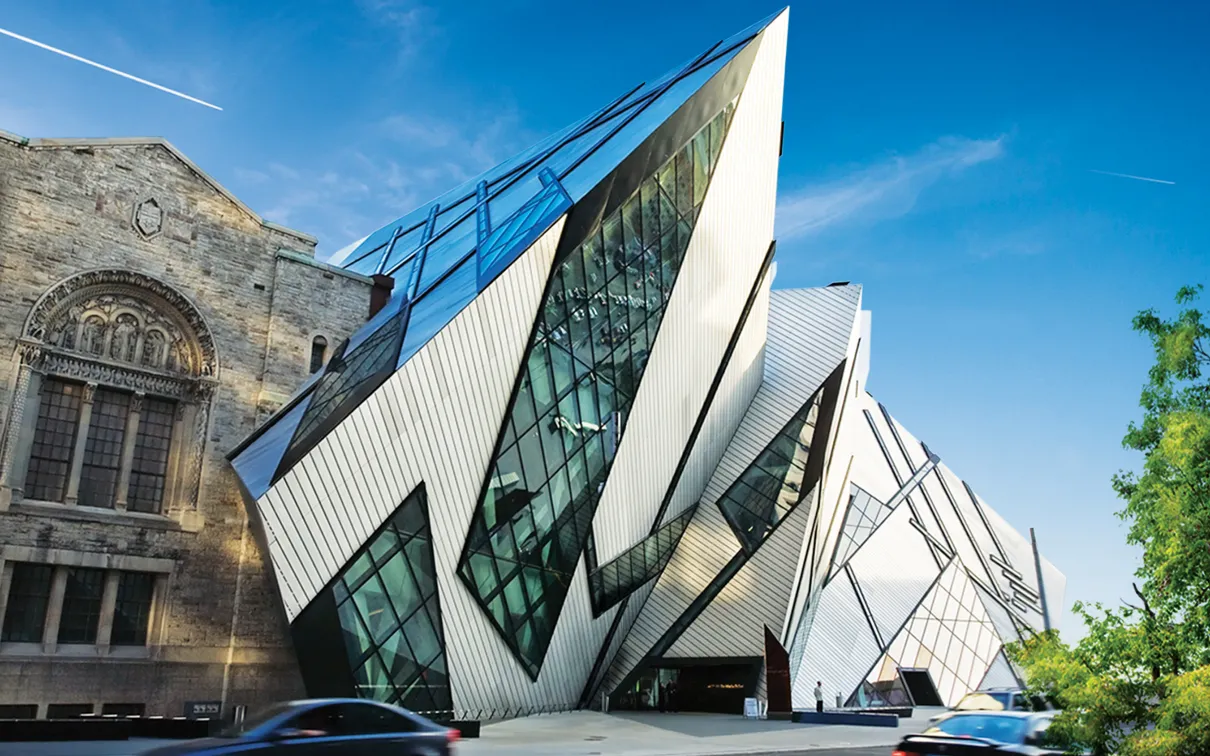New ROM Exhibition Explores the Extraordinary Stories of Great Whales
Published
Category
Press Release
This summer, Great Whales: Up Close and Personal invites visitors to venture beneath the surface and discover the fascinating and enigmatic world of Earth’s largest animals

TORONTO, ON, July 13, 2021 – This summer the Royal Ontario Museum (ROM) welcomes families back to the Museum and into the deep with Great Whales: Up Close and Personal. Featuring three real whale skeletons, fascinating science and large-scale audio and video experiences, this major new ROM exhibition immerses audiences in the unique world of the majestic giants that swim off the east coast of the lands now known as Canada. Presented in the ROM’s largest exhibition gallery, Great Whales is supported by lead exhibition patrons Nita and Don Reed & Family and supporting sponsor Newfoundland and Labrador Tourism. Great Whales opens to the public Saturday, July 17, 2021.
“The Museum is thrilled to welcome the public back through our doors with this stunning original exhibition,” says Josh Basseches, ROM Director & CEO. “Great Whales: Up Close and Personal promises to not only enthrall visitors with the awesome size and scale of these animals, but help people better understand their lives and the threats they face. We hope that together we can help shape a better future for these three species.”
Great Whales brings visitors intimately into the lives of these massive and enigmatic creatures, exploring their evolution, behaviour, ecological roles, threats, and their complex relationship with humans. Visitors will connect with the extraordinary stories behind the lives of these species through large-scale immersive video projections, a rumbling sound chamber, and a gigantic life-size walk-through whale jaw. The exhibition is shaped by, and incorporates, the deeply personal Indigenous connections with the lives of whales.
The opportunity to see the three whale species up close—especially for visitors who live far from the oceans—is a critical step in their conservation, explains Dr. Mark Engstrom, Curator Emeritus of Mammals and lead curator of Great Whales.
“It is poignant, that what brought these three whales together at the ROM is their individual tragic deaths. It is through getting to understand these whales better that we can start to learn how to save them,” says Dr. Engstrom. “To see whales swimming freely is a profound experience, matched only by the heartbreaking task of working on their remains,” he says. “Our contribution at the ROM is to learn as much as we can, study their anatomy and DNA, what it says about their populations, and share with the public why it’s critical to preserve and protect them and their ocean environments.”
The future of great whales is in our hands. In the last 200 years, human activity connected to rapid modern industrialization, commercial whaling, and increased pollution has reduced whale populations to a fraction of what they once were.
About the three whales on display:
In Great Whales, visitors encounter a sperm whale, who died after beaching himself on a sandbar near Kildare Capes in western Prince Edward Island on the night of Tuesday, December 12, in 2001. Also featured in the exhibition is the return of ROM’s blue whale; she was one of nine that were trapped by ice and perished in the Gulf of St. Lawrence in 2014 after coming to the area to feed. The third of the great whales is a North Atlantic right whale, which had survived at least three entanglements with fishing gear during his life before a ship strike in the Gulf of St. Lawrence killed him in 2017. Right whales were once common in the Bay of Fundy from spring to fall, where they came to feed on an abundance of copepods, but climate change has forced their food source, and thus the whales, to move into the waters of the Gulf of St. Lawrence, where tragically 11 others also perished that same year.
About the Exhibition:
The exhibition guides visitors through different sections as they learn and get up close with aspects of these amazing creatures. It begins with the ROM curatorial team and how this story began. Then into an introduction to great whales where visitors first come to know three species featured in this exhibition.
Other sections delve into whale’s unique adaptations to a life in the ocean, such as their breathing, how they communicate, and why noise pollution is a serious threat to them. Whales also possess great intelligence, have social and cultural behaviour and learn from each other. Great whales are big and so are their hearts, as visitors can see with the ROM’s real plastinated blue whale heart—the only one in the world. When a whale eventually dies, it usually sinks to the bottom of the ocean as whale fall and creates a special marine habitat nourished by the dead whale for decades. Whale evolution is a fascinating journey of adaptation, with their closest living relative being the hippopotamus. A whale’s diet is as diverse as the species of whales, and while they feed on food big and small, with some coming to feed in the Gulf of St. Lawrence and Bay of Fundy. By the end of industrial whaling, the global populations of the largest whales had been drastically reduced and there was an urgent need for conservation.
Once, millions of great whales swam through the oceans, but their greatly reduced numbers today mean that now we have to help save the whales. Most critical is the North Atlantic right whale of which there are less than 375 remaining. Almost all North Atlantic right whales have been entangled and injured by ropes from fishing gear. Of all the recent right whale deaths investigated, 51% were caused by fishing gear entanglements and 37% were from ship strikes. At the end of the Great Whales exhibition visitors can find out what they can do to help whales recover and spread the word to others using an interactive display and hashtag #ROMGreatWhales.
Programs:
Audiences can learn more about whales anytime with digital ROM content, including The Right Kind of Whale from ROM Magazine and Baleen and Blue Whales on ROM at Home. A series of public talks will be scheduled over the run of Great Whales. All current programs will be online only via Zoom.
Curator Conversations: Collecting the Right Whale
Join ROM Mammalogy Technician Jacqueline Miller in conversation with Dr. Burton Lim, ROM Assistant Curator, as they recount the journey of a single North Atlantic Right Whale. This program was recorded on May 26 and is available for viewing on ROM’s YouTube channel.
Curator Conversations: Marine Rescue and Research
Featuring Dr. Mark Engstrom, ROM Curator Emeritus of Mammals, and Tonya Wimmer, a marine mammal biologist and the Founder and Executive Director of the Marine Animal Response Society. This program was recorded on June 23 and will soon be available for viewing on ROM’s YouTube channel.
Curator Conversations: North Atlantic Right Whales & the Dangers of Fishing Gear - July 28
Featuring Dr. Mark Engstrom, ROM Curator Emeritus of Mammals, Mark Peck, Manager Schad Gallery of Biodiversity and the Canadian Whale Institute’s Mackie Greene where he leads the Campobello Whale Rescue Team, to discuss the impact of fishing gear, entanglements, and entrapments on marine mammals from the Bay of Fundy to the Gulf of St Lawrence. https://www.rom.on.ca/en/whats-on/north-atlantic-right-whales-the-dangers-of-fishing-gear
Curator Conversations: Blue Whales Revisited - July 29
Featuring Dr. Asha de Vos, marine biologist, ocean educator and pioneer of blue whale research in one of the busiest shipping lanes in the world. https://www.rom.on.ca/en/whats-on/blue-whales-revisited
Working Together to Save the Whales:
This ROM exhibition would not be possible without the support and assistance of community and science partners including Research Casting International, Marine Animal Response Society, Canadian Whale Institute and the Campobello Whale Rescue Team, New England Aquarium, North Atlantic Right Whale Consortium, Mingan Island Cetacean Study, and Dalhousie University. As well, Elders, artists, and members of the Mi’kmaw, Wolastoq, and Passamaquoddy Nations provided expertise, stories, and content for the exhibition, including offering names for the sperm whale and the right whale. None of this would be possible without the support of the people of Trout River and Woody Point, Newfoundland; and Kildare Capes and Norway, Prince Edward Island, as each provided considerable support and hospitality during the collection of the whale specimens. The whale remains were collected under permit from Fisheries and Oceans Canada.

-30-
Image Credit
Great Whales exhibition showing sperm and blue whale: Paul Eekhoff, © Royal Ontario Museum
Museum Re-opening
Following guidance of the Ontario Chief Medical Officer of Health, the ROM is currently temporarily closed to the public. Great Whales: Up Close and Personal will open to the public July 17, 2021, with the reopening of the Museum and run until March 20, 2022. Visit www.rom.on.ca for further updates on ROM reopening and exhibition opening dates.
COVID-19 and Great Whales
The health and safety of our staff, volunteers and visitors remain the ROM’s top priority. Great Whales: Up Close and Personal will feature precautions to prevent the spread of COVID-19. Touchables and interactives have been temporarily modified or closed. Visitors are encouraged to bring their own smartphone/devices to read QR codes where available. Other precautions while visiting the ROM’s large and welcoming indoor spaces feature the following COVID-19-related protocols:
- Timed ticketing and limited capacity: In accordance with the Province’s plan, the ROM will operate at up to 50% capacity and tickets will be offered on a limited, timed basis.
- Air filtration: ROM uses museum-standard MERV-14 filtration, which exceeds COVID-19 best practice recommendations set by the American Society for Heating, Refrigerating and Air-Conditioning Engineer
- Enhanced cleaning protocols: Areas are wiped and sanitized on an hourly basis (at minimum)
- Safety protocols: Wayfinding and floor markers are in place for social distanced viewing.
- See the ROM’s website for the most up-to-date information.
ROM COMMUNICATIONS
General: media@rom.on.ca
Exhibition publicity: David McKay
davidm@rom.on.ca
*Email is preferred during COVID-19 work-from-home protocols
SOCIAL MEDIA
#ROMGreatWhales
Instagram: @romtoronto
Facebook: @royalontariomuseum
Twitter: @ROMtoronto


